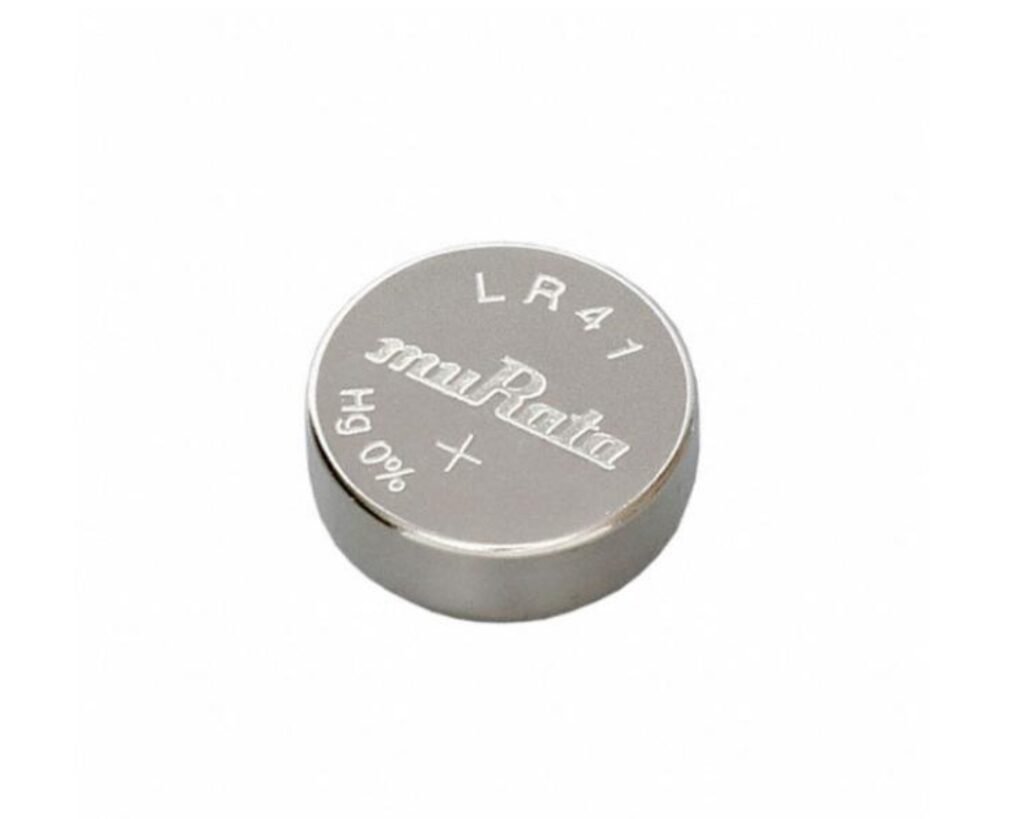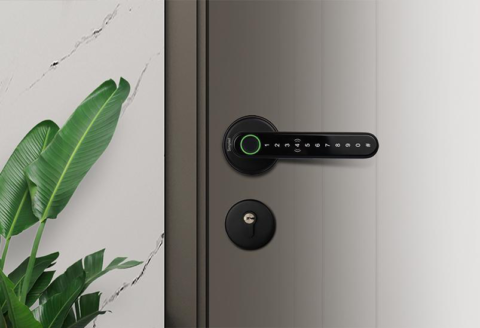What is LR41 Battery?
The nominal voltage of the LR41, a tiny alkaline button cell, is 1.5 volts. Its measurements are roughly 3.6 mm in height and 7.9 mm in diameter. It typically has a milliampere-hour (mAh) capacity of 25 to 30. Low-power gadgets including watches, calculators, remote controls, digital thermometers, medical equipment, toys, laser pointers, and tiny LED bulbs frequently use LR41 batteries. Ersa Electronics will provide all kinds of battery products like LR41, LR44, and so on.

LR41 Battery Applications
LR41 batteries are widely utilized in a range of small electronic devices due to their durability and compact size. Here are a few noteworthy examples:
Watches and Clocks: LR41 batteries are widely used to supply the energy required for timekeeping devices, such as wristwatches and clocks.
Calculators: To ensure precise computations, LR41 batteries are used in many handheld calculators. These batteries consistently supply power.
Medical devices: A few examples of devices that need consistent and long-lasting electricity are digital thermometers, diabetes meters, and hearing aids. These devices make use of these batteries.
Garage door remote controls, car keys, and other small electrical gadgets are commonly operated by LR41 batteries.
Toys: LR41 batteries are used in a variety of electronic toys due to their small size and consistent voltage output.
Flashlights: Small flashlights or keychain lights may need LR41 batteries in an emergency.
Laser Pointers: Because of their compact form factor, LR41 batteries power a lot of laser pointers.
Security Systems: As a backup power source, several security system panels use LR41 batteries.
All things considered, the LR41 battery is a popular option across many industries due to its adaptability and compatibility for applications requiring a tiny yet stable power supply.
Advantages of Using LR41 Battery
A popular choice with several advantages for small electrical device powering is the LR41 battery. The following are the main benefits:
Small Size: The LR41 battery fits well in devices with limited space, such as watches and calculators, thanks to its 7.9 mm diameter and 3.6 mm height.
Stable Voltage Output: The nominal voltage of 1.5 volts of the LR41 ensures consistent performance in a range of applications, making it perfect for sensitive devices such as precision instruments.
Good Capacity: Batteries having a maximum capacity of 32 milliampere-hours can power low-drain devices for lengthy periods of time.
Wide Availability: LR41 batteries are readily available and may be found easily at many Electronics Stores and online marketplaces.
Cost-Effectiveness: LR41 batteries provide a stable power supply without posing a significant financial strain because they are less expensive than other battery types like lithium or silver oxide.
Alkaline Chemistry: For consumers looking for dependable options, the LR41 is a well-known and moderately priced alkaline battery that delivers good performance.
Long Shelf Life: LR41 batteries have a 2- to 5-year shelf life if stored properly, which makes them perfect for electronics that aren’t used often.
Environmental Impact: Compared to heavy metal-containing batteries, including those containing cadmium or mercury, alkaline batteries, like the LR41, often have a smaller negative environmental impact. Recycling and proper disposal are still essential, though.
The LR41 battery is a flexible and sensible choice for a range of small electronic applications because of these advantages.
LR41 Battery Equivalent
Although LR41 batteries are commonly available and in use, depending on particular requirements, the following alternatives may be considered:
SR41 Battery: Because of their comparable sizes and voltage characteristics, SR41 batteries provide a viable substitute for LR41 batteries. Although they may cost a little more, they frequently work in place of LR41 batteries.
LR44 Battery: If the device’s size permits, LR44 batteries—also referred to as AG13 or A76—can be used in lieu of the original battery. Because of their slightly bigger size than LR41 cells, these batteries provide a longer runtime.
Silver Oxide vs. Alkaline: The SR41 cell employs silver oxide chemistry, while the LR41 battery uses alkaline chemistry. Silver oxide batteries provide a more consistent voltage output for applications that need a constant power source.
Examine Energy Demands: Take your device’s energy requirements into account when selecting a replacement. Some options may last longer, but because of their size, they might not fit the design of your gadget.
An excellent replacement for the LR41 battery is the LR44 battery. So let’s take a closer look at this one.
LR43 vs. LR44 vs. LR41 Battery Equivalent
LR43 Battery Equivalents:
The LR43 and comparable small alkaline button cell batteries are commonly used in watches, calculators, and other small gadgets. It has several identical batteries with similar dimensions, voltages, and capacities. The following are the typical LR43 counterparts:
AG12 Battery: The AG12 is the most popular and straight substitute for the LR43. It uses an alkaline chemistry and has the same nominal voltage of 1.5V. In most devices, this battery and the LR43 can be used interchangeably.
86 Battery: The 186 Battery and the LR43 Battery have the same dimensions and voltage. This name, albeit less common, nonetheless refers to the same type of battery.
301 / 386 Battery: The 301 and 386 batteries are the equivalents of the silver oxide in the LR43. Silver oxide batteries frequently have a longer lifespan and a more consistent voltage output when compared to alkaline batteries. The 301 and 386 are equivalent in size, therefore they can be used in place of the LR43.
SR43 Battery: The SR43 Battery is the silver oxide equivalent of the LR43. The SR43, like other silver oxide batteries, produces a more constant voltage over time, making it suitable for applications that require consistent and reliable power supply. The SR43W and SR43SW (W for high-drain devices, SW for low-drain devices) show different discharge rates.
GP43 Battery: Manufactured by GP Batteries, the GP43 Battery is an equivalent of the LR43 Battery. Like the LR43, it is an alkaline button cell battery that is compatible with most devices.
L1142 Battery: An equivalent name for the LR43 battery, the L1142 Battery is also utilized by some manufacturers. Its dimensions, voltage, and chemical composition are all the same as those of the LR43.
One kind of alkaline battery is the LR44 battery. LR1154, L1154, A76, AG13, G13, and 154 are a few of the options. Additionally, silver-oxide LR44 batteries can be used in place of alkaline ones; compatible models include SR44, SR44SW, SR44W, SB-B9, 303, and 357.
LR41 Battery Equivalent:
192, 92A, LR736, and AG3 batteries can be used immediately in place of LR41 cells. Although the 384, SR41, and 392 silver oxide batteries are identical in size and dimensions to LR41 batteries, their unique chemical compositions lead to varying functionality in different applications, hence they are not exact duplicates or direct replacements. Even though these alternatives have the same size as LR41 batteries, they are not the same.
LR44 Battery: A Viable Alternative to LR41 Battery
When looking for alternatives, the LR44 battery is a well-known replacement for the LR41 battery. In some ways, the LR44—also known as AG13 or A76—is similar to the LR41, but it also offers several advantages. Here, we look at the key features, compatibility, and considerations to make while converting from LR41 to LR44 batteries.
Differences in Size and Dimensions
The most obvious distinction between the LR41 and LR44 batteries is their size. The dimensions of the LR41 are smaller and more compact, measuring 3.6 mm in height and 7.9 mm in diameter.
In contrast, the LR44 has a larger diameter of roughly 11.6 mm and is higher at 5.4 mm. This bigger size gives it additional power in some applications because to its longer lifespan and increased energy capacity.
Compatibility and Interchangeability
LR44 batteries are commonly used in place of LR41 cells in devices that can use the larger size, despite their different sizes. Many devices designed to use LR41 cells may be compatible with an LR44 battery without any modifications.
However, it is imperative to ensure that the larger size of the LR44 does not compromise the device’s functionality or safety, especially if the battery compartment is designed specifically for the smaller LR41. Make sure the fit is proper to avoid any issues with the functionality of the gadget.
In conclusion, despite the LR44 battery’s higher capacity and power compared to the LR41, its larger size means that it should only be utilized in devices that can accommodate its larger size.
Advantages of using LR44 Battery
Longer Runtime: LR44 batteries have a larger energy capacity than LR41 batteries because of their larger size. Because of their higher capacity and possible longer runtime, LR44 batteries are especially well suited for devices that require more energy.
Voltage Stability: Similar to LR41 batteries, LR44 batteries generate a steady voltage over the life of their lives. Devices like electronics and medical equipment that need steady, dependable electricity can benefit greatly from this capability.
Cost-effectiveness: LR44 batteries are widely available and reasonably priced. They are a popular option for anyone looking for an LR41 battery substitution due to their inexpensive cost.
LR43 Battery: A Viable Alternative to LR41 Battery
The LR43 battery is not a direct equivalent or viable alternative to the LR41 battery. While they share some similarities in terms of being alkaline button cell batteries, there are significant differences in their size, voltage, and capacity that make them incompatible for direct substitution.
Key Differences Between LR43 and LR41 Batteries
Size: The LR43 battery has a diameter of 11.6mm and a height of 4.2mm, while the LR41 battery is much smaller with a diameter of 7.9mm and a height of 3.6mm.
Voltage: Both the LR43 and LR41 batteries have a nominal voltage of 1.5V.
Capacity: The LR43 battery has a typical capacity of 110mAh, significantly higher than the 25-32mAh capacity of the LR41 battery.
Weight: The LR43 battery weighs 1.6g, while the LR41 battery weighs only 0.57g.
Alternatives to LR41 Batteries
Direct replacements for the LR41 battery include batteries labeled as 192, 92A, LR736, and AG3. However, it’s important to note that while the 384, SR41, and 392 silver oxide batteries share the same size and dimensions as the LR41, they are not exact counterparts or direct substitutes due to their different chemical compositions.
Advantages of using LR43 Battery
Numerous benefits make the LR43 battery a superior option for a range of applications. The main advantages are as follows:
1. High Capacity and Energy Density
The LR43 battery is well-known for having a large capacity—roughly 110 mAh—that enables it to power electronics for long periods of time. Because of its high energy density, gadgets can function well without needing to change their batteries very often.
2. Durability and Reliability
The long-term performance of LR43 batteries is intended to be constant. Their exceptional resistance to leaks increases their dependability in delicate electronics. Because battery failure can have catastrophic repercussions in applications like security systems and medical devices, durability is very critical.
3. Stable Voltage Output
For applications that demand constant power levels, these batteries’ ability to maintain a stable voltage output throughout their discharge cycle is essential. This feature helps to guarantee that electrical devices and tools operate as intended, uninterrupted.
4. Cost-Effectiveness
LR43 batteries are a cost-effective choice for customers because they are typically accessible and reasonably priced. Their extended longevity additionally enhances their total worth by enabling users to save money by lowering the need for replacements over time.
5. Versatile Applications
Numerous gadgets, such as watches, calculators, remote controls, and electronic toys, are compatible with the LR43 battery. Because of its adaptability, it is a sensible option for a variety of commonplace uses.
6. Environmental Compliance
LR43 batteries are produced in compliance with environmental requirements by being free of lead, cadmium, and mercury. They are a safer option because of their compliance for both people and the environment.
Conclusion of LR41 Battery Equivalent
The LR41 battery is a compact, multipurpose button cell battery that is used in many small electrical devices. There are several similar and alternative batteries that function well together in a range of circumstances, despite having a specific nomenclature.
In conclusion, despite the LR41’s unique classification, there are a variety of similar and alternative button cell batteries available that can be utilized to power small electronic devices when necessary. It is recommended to carefully examine voltage, chemistry, and size while selecting a replacement.
FAQs About LR41 Battery Equivalent
What is a battery called LR41?
Small alkaline button cell batteries, like the LR41 battery, are frequently found in a variety of electronic gadgets, including remote controls, calculators, and watches. It is 3.6 mm in height and 7.9 mm in diameter, with a nominal voltage of 1.5 V.
What batteries are comparable to the LR41?
There are other battery types that are interchangeable with the LR41 battery, such as AG3, 392A, LR736, SR41, 192, and 92A. Due to their comparable sizes and voltage ratings, these batteries can be used as stand-ins in a variety of situations.
Can I use an LR41 battery in place of a silver oxide battery?
Indeed, SR41 and other silver oxide batteries can be used interchangeably with LR41 batteries. Though they might cost a little bit more, they usually have a longer lifespan and a more consistent voltage output.
Are batteries marked LR41 and LR44 interchangeable?
No, you cannot use LR41 and LR44 batteries interchangeably. The LR44 battery is bigger, measuring 11.6 mm in diameter and 5.4 mm in height. Despite having a nominal voltage of 1.5V, the two batteries cannot be used interchangeably due to their different sizes.
When selecting an LR41 equivalent, what factors should I take into account?
When choosing an equivalent for LR41, take into account the following: Make sure the equivalent battery fits your device securely. This is known as device compatibility. Minimum Voltage Needed: Verify that the voltage of the replacement battery is compatible with the requirements of your device. Energy Demands: While some alternatives might have longer runtimes, their physical size might affect fit.
How should LR41 batteries be disposed of?
For the protection of the environment, LR41 batteries must be disposed of properly. There are particular rules for disposing of batteries in many places. To be sure you are disposing of batteries in an environmentally safe way, check your local rules.
Where can I buy batteries for LR41?
The majority of hardware stores, electronics merchants, and internet marketplaces carry LR41 batteries. Because they are frequently used in a variety of devices, they are readily available.
Passionate content writer and savvy blog publisher, Aamir crafts compelling stories and insightful articles that captivate and inform. With a knack for blending creativity and strategy, they bring fresh perspectives to every piece. Dive into their world of words and discover content that resonates.





